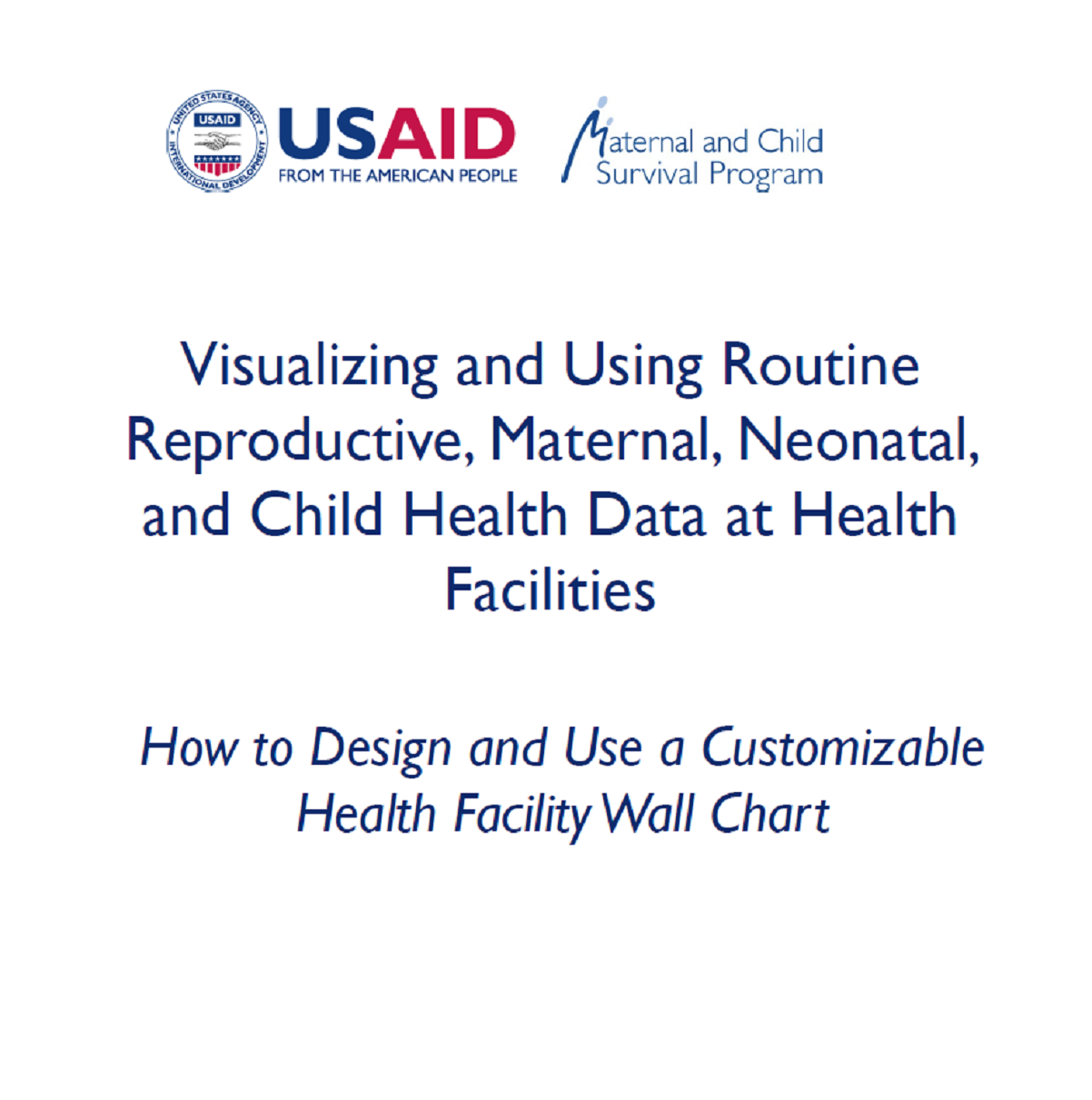Publish Date: May 2018
Author: MCSP
What is the purpose of this resource package?
Visualizing and Using Routine Reproductive Maternal, Neonatal and Child Health Data at Health Facilities: A Resource Package for Health Providers and District Managers is intended to help healthcare providers and managers develop competencies to use routine RMNCH service delivery data to monitor and improve the quality of RMNCH care and client outcomes on an ongoing basis.
Background and rationale
While national Health Management Information Systems (HMIS) already collect RMNCH data and train health workers in data collection and reporting, these systems typically emphasize tracking service utilization, rather than content of care, and sending the information up to the district level rather than using it at the point of care where it is generated. Moreover, data visualizations/wall charts used at facilities are generally limited and often focused on vertical services as HIV/AIDS or immunization, with little information posted on RMNCH. In addition, current routine data use and visualization capacity building materials for low and middle income settings are largely focused on immunization or HIV/AIDS and materials that address RMNCH services were lacking. To help fill this gap, MCSP created the Visualizing and Using Routine Reproductive, Maternal, Neonatal, and Child Health Data at Health Facilities resource package, which focuses on information needed to inform local implementation of evidence-based practices across the RMNCH continuum of care.
Who are the target audiences for this resource package?
The package is designed for use with:
- Health care professionals (physicians, nurses and midwives) and paraprofessionals (community health workers) who deliver RMNCH services
- Facility-based quality improvement teams
- Facility- and district-based health information officers (or equivalent)
- Community, facility, district and regional managers of RMNCH service delivery networks
Learning objectives
By the end of the training, if all modules are used, participants will:
- Understand how service delivery data can be used to assess and improve the quality of specific RMNCH services;
- Acquire skills in data management, including calculation of indicators, and visual display of information, interpretation of data and identification of data quality concerns;
- Acquire skills in presenting and interpreting data at performance review meetings as part of evidence-based continuous quality improvement efforts or routine facility management;
- Develop competencies in how to use data for decision making at the facility level; and
- State the importance of providing supervision to help ensure the use of data for decision making and quality improvement processes.
Content and design of the resource package
The resource package is designed as a three-day modular training on specific skills providers, supervisors and others need to effectively monitor RMNCH services and inform management decisions and includes a set of job aids providers and managers can take back with them to their health facilities. The resource package covers building and applying competencies in data capture, indicator calculation, data display/visualization, data interpretation, and data use for indicators related to RMNCH service utilization, quality of care, and health outcomes.
Each module strengthens skills in a specific aspect of visualizing and using routine RMNCH information (e.g., family planning, antenatal care, labor and delivery care, sick child care) to monitor and improve delivery of that care. All modules share a common approach and objectives and rely on similar principles of data quality assurance and performance review. Modules can be used independently of each other if there is not adequate time or need to cover all content in the resource package. RMNCH-related examples of data collection forms, indicators and indicator calculation steps, data visualization formats, and review and interpretation processes are provided throughout the package.
Resource package materials, which are still in development, include:
- Facilitator materials
o Facilitator’s guide
o PowerPoint presentations - Participant materials:
o Training handouts/exercises
o Job aids
+ Laminated wall chart templates and sample completed wall charts for family planning, antenatal care, and labor & delivery
+ Supervision module for district health management teams
+ Indicator calculation guidance
+ Indicator visualization guidance
+ Data review meeting guidance
Key assumptions
The resource package makes some assumptions about the context in which the modules will be used:
- The package does not replace existing curricula on other health information related to RMNCH, such as utilization, HIV/AIDS, or immunization. Training in these other aspects of RMNCH information is useful but not assumed in the resource package modules.
- Trainers and participants are familiar with the technical aspects of service delivery related to the module.
- Service providers already collect basic information about services provided and clinical outcomes in client registers.
- Trainers will include district-level RMNCH management staff whose training will include use of information for service delivery network management and who will develop a supervisory plan for on-the-job follow-up.
- Some group, such as a facility- or district-based quality management team, will be actively engaged in the training and provide ongoing encouragement and support for performance review and improvement.
- The training will need to be customized to the local context with respect to selection of indicators and modules to be used.

